08:00 | Conference Registration, Materials Pick-Up, Coffee and Tea in the Exhibit Hall |
|
Session Title: Flow Chemistry Asia 2023 Opening Session |
| |
|
Session Chairperson: Professor Dr. Paul Watts, Nelson Mandela University |
| |
09:00 | 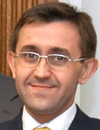 | Conference Chair Emerging Trends in Continuous Flow Chemistry
Paul Watts, Distinguished Professor and Research Chair, Nelson Mandela University, South Africa
|
|
09:25 | 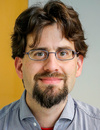 | Conference Chair Welcome and Introduction by Conference Co-Chairperson
Simon Kuhn, Professor, Department of Chemical Engineering, KU Leuven Belgium, Belgium
|
|
09:30 | 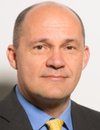 | Keynote Presentation Conference Opening Keynote -- Running Hazardous Chemistry in Flow – HF, F2, SF4 and More……
C. Oliver Kappe, Professor and Scientific Director, Center for Continuous Flow Synthesis and Processing, University of Graz, Austria
Organofluorine compounds are gaining popularity in chemical industries, especially in pharma and agrochemistry. Approximately 50% of the blockbuster drugs contain fluorine atoms. Organofluorine blockbuster drugs include e.g. atorvastatin (cardiovascular diseases), dolutegravir (HIV), emtricitabine (HIV), enzalutamide (cancer), and sitagliptin (diabetes). The introduction of fluorine atoms considerably influences the physical, chemical and biological properties of organic compounds as the bioavailability, lipophilicity or the metabolic stability of pharmaceuticals can be improved remarkably. This ever-increasing demand has transformed fluorine chemistry into a rapidly growing field of research. Despite this strong demand for fluorinated molecules in the pharma and agrochemical industry, the production of fluorinated compounds is often outsourced to specialized laboratories. This is likely the result of safety concerns in handling hazardous fluorinating reagents, alongside lack of expertise and equipment. Continuous flow chemistry has become an established method to perform hazardous reactions in a safe and controlled manner. In this lecture, contributions from our research group in the field of handling hazardous fluorinating reagents under flow conditions will be highlighted. Emphasis will be given on the safe use of HF (as amine complex), F2 (10% F2 in N2) and SF4 towards the synthesis of APIs or advanced intermediates. |
|
10:15 | 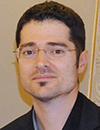 | Keynote Presentation Microfluidics, A Versatile Tool to Produce High Quality Nanomaterials in Continuous Flow
Victor Sebastian, Full Professor, University of Zaragoza, Spain
In the last decade, the synthesis of nanomaterials with controlled size, shape and composition has received great interest due to their unique properties, enhancing their application in a plethora of fields: biomedicine, molecular diagnosis, biosensing, catalysis, energy, optics and electronics. Consequently, the controlled synthesis of nanomaterials has attracted significant attention because their properties are directly determined by their morphological and chemical features. However, there are urgent problems originated from very recent and practical demands in nanomaterial synthesis and the not straightforward scale-up of the successful laboratory-adapted protocols to an industrial level. This lecture will provide an overview of the adoption of microfluidic flow chemistry in the synthesis of inorganic, organic and hybrid nanomaterials. Microfluidics allows a novel process control window of well-defined nanomaterials, where the counterparts produced in conventional batch-type reactors are replicated but with an excellent control in size distribution, shape, and chemical composition. |
|
10:45 | Mid-Morning Coffee and Tea Break and Networking in the Exhibit Hall |
11:15 | Rapid and Column-Chromatography-Free Flow-Peptide Chain Elongation
Shinichiro Fuse, Professor, Nagoya University, Japan
Peptides have become increasingly important as drugs. In this study, we developed rapid, mild and column-free peptide chain elongation via one-flow, three-component coupling approach using amino acid N-carboxy anhydride (NCA) which has both nucleophilicity and electrophilicity. The key to success was the rapid generation of acid chloride from amino acid and its rapid coupling with NCA via rapid dual activation. |
11:45 | Rapid Formation of Multi-layer Microcapsule in Microflow
Takaichi Watanabe, Research Associate Professor, Okayama University, Japan
We present formation of multi-layer microcapsules using a simple emulsion drop formed in microflow. |
12:15 | 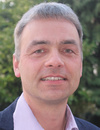 | Keynote Presentation New Opportunities for Flow Electrochemistry
Thomas Wirth, Professor, Cardiff University, United Kingdom
The development of a microreactor for electrochemistry including applications to modern synthesis will be discussed. The electrochemical generation of hypervalent iodine compounds using this technique will be highlighted in detail, together with examples of halogenations using such reagents. Reactions towards the formation of N–N-bonds will also be discussed. |
|
12:45 | Networking Luncheon in the Exhibit Hall -- Network with Exhibitors, View Posters and Engage with Colleagues. **Lunch is Japanese Bento** |
|
Session Title: Engineering in Flow Chemistry, circa 2023 |
| |
|
Session Chairperson: Professor Dr. Simon Kuhn, KU Leuven |
| |
14:00 |  | Keynote Presentation Process Intensification: Producing More with Less
Daria Camilla Boffito, Canada Research Chair in Engineering Process Intensification and Catalysis (EPIC) and Associate Professor, Polytechnique Montréal, Canada
Economic growth while accounting for social needs, climate change and environmental protection are key to tackle the United Nations Sustainable Development Goals (UN-SDGs) and accelerate the energy transition towards the electrification of the chemical industry. Green technologies based on cleaner energy sources such as biofuels, hydroelectricity, wind and natural gas are a global priority. Their implementation cannot only rely on existing industrial infrastructures but needs new resources and space. This represents a limit to the increase in the production capacity of existing chemical plants and to the development of new technologies. Process Intensification (PI) is a new archetype of the chemical industry that targets order of magnitude improvements to manufacture chemicals by either retooling existing facilities or finding new smaller, more efficient breakthrough technologies. Examples of PI technologies include HiGee reactors (e.g. spinning-disc reactors), alternative energy vectors to power chemical processes (ultrasound, microwaves, plasma), static mixers, and membrane reactors. In this talk, Prof. Boffito will show how PI still struggles to find a definition, despite the undisputable advantages. These include, for instance, energy, capital and operational expenditures (CapEx and OpEx) savings in the 20-80% range, and a reduction of emitted CO2 eq. up to 80%. She will also explain how PI represents a paradigm-shift that, by a matter of fact will change the chemical industry in the upcoming years. Prof. Boffito will browse the available methods to intensify chemical processes, specifically those for carbon capture and utilization (CCU), and will explain why we need to apply them both to existing and new processes. Further, she will highlight how PI can contribute to attain the UN-SDGs. |
|
14:30 | Sustainable Chemical Synthesis of High Added-Value Compounds from Renewable Sources in Flow Regime
Julio Cezar Pastre, Associate Professor, University of Campinas – UNICAMP, Brazil
Raw materials from renewable sources, as well as agro-industrial waste, represent an attractive source of useful chemical functionalities. Our research group has already identified continuous flow processing as a fundamental technology for the valorization of such materials. Flow chemistry offers unique opportunities for the conversion of biomass derivatives into chemical compounds with higher-added value, since it brings numerous advantages in terms of unique process experience, scalability, and reduced environmental footprint. In this context, we will present our efforts for the synthesis of platform molecules (such as furanics) and new chemicals (monomers, nitrogenated aromatics) from biomass derivatives.
For some representative works, please see:
Marçon, H. M.; Pastre, J. C. “Continuous flow Meerwein-Ponndorf-Verley reduction of HMF and Furfural using basic zirconium carbonate”. RSC Advances 2022, 12, 7980-7989.
Galaverna, R.; Fernandes, L. P.; Browne, D. L.; Pastre, J. C. “Continuous Flow Processing as a Tool for the Generation of Terpene-Derived Monomer Libraries”. Reac. Chem. Eng. 2019, 4, 362-367.
Galaverna, R.; Ribessi, R. L.; Rohwedder, J. J. R.; Pastre, J. C. “Coupling Continuous Flow Microreactors to MicroNIR Spectroscopy: Ultra-Compact Device for the Facile In-line Reaction Monitoring”. Org. Process Res. Dev. 2018, 22, 780-788.
Galaverna, R.; Breitkreitz, M. C.; Pastre, J. C. “Conversion of D-Fructose to 5-(Hydroxymethyl)furfural: Evaluating Batch and Continuous Flow conditions by Design of Experiments and In-line FT-IR Monitoring”. ACS Sustainable Chem. Eng. 2018, 6, 4220-4230. |
15:00 | Fundamentals and Research Progress of Photochemical Microreaction Technology
Yuanhai Su, Professor, Shanghai Jiao Tong University, China
The research progress of our group in photochemical microreaction technology will be introduced, focusing on the design and construction strategies of photomicroreactors and its applications in synthesis of high-value chemicals associated with mass transfer, reaction kinetics and automatic control studies. |
15:30 | Mid-Afternoon Coffee and Tea Break and Networking in the Exhibit Hall |
16:00 | Contributions of Reaction Engineering Towards Efficient Photochemical Processes
Dirk Ziegenbalg, Professor of Chemical Engineering, Ulm University, Germany
The contribution will discuss the fundamentals of photochemical reaction engineering in the context of comprehensive reporting and characterization of laboratory experimental setups. It will be shown that synergistic interdisciplinary work can lead to an enhanced photocatalytic performance through dynamic irradiation strategies, in-depth mechanistic understanding, and improved reactor designs. Examples will be provided to illustrate this point. |
16:30 | Green and Continuous Synthesis of Thiuram Disulfides via Electrochemical Microreactor
Kai Wang, Associate Professor, Department of Chemical Engineering, Tsinghua University, China
Different kinds of thiuram disulfides was efficiently and environmentally synthesized with microreactors. |
17:00 | Process Intensification for the Electrification of Chemical Manufacturing
Simon Kuhn, Professor, Department of Chemical Engineering, KU Leuven Belgium, Belgium
Small scale flow reactors have great advantages over conventional reactors, such as well-controlled flow patterns and increased surface-to-volume ratios, resulting in enhanced heat and mass transfer rates. Coupled with other benefits such as inherent safety allowing to perform reactions at elevated temperatures, pressures, or using highly reactive intermediates, they have become an attractive choice for the continuous manufacturing of chemicals and pharmaceuticals. However, these applications are still hindered by two important obstacles namely, weak convective mixing and issues regarding solids handling. Integrating ultrasound with small scale flow reactors has proven to be one of the more promising methods to address these issues. With selected examples, we will showcase the synergistic effect of ultrasound for particle synthesis, as well as electro- and photochemical processes. Exploiting these synergistic effects results in novel reactor concepts which will support the shift in chemical manufacture towards green and sustainable processes based on renewable energy sources. |
17:30 | Networking Reception in the Exhibit Hall with Japanese Beer and Sake |
18:30 | Close of Day 1 Conference Programming |








